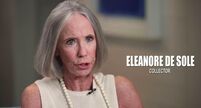In fact, investment can be roughly divided into three categories, and the risks are also different:
Benjamin Graham/Walter Schloss's "picking junk" faction: This faction is extremely conservative, and even the cash flow is considered unreliable. If the current assets are sold at a discount, will they be 1/3 higher than the stock price.
Charlie Munger / Warren Buffett is a fusion of the Philip Fisher school of "franchising": this is still a cash discount, and there are two kinds of opportunities (according to Marathon's theory): one is a business that others think cannot grow but is actually operating It is appropriate to continue to maintain or even increase profits. One is that the growth is faster and more sustainable than thought.
George Soros / John Maynard Keynes / Li Xiaolai's "Reflexive Beauty Pageant SB Consensus": This self-fulfilling prophecy judgment requires neither assets nor cash flow, but the ability to identify and guide people's hearts a few or a lot of people with little money).
Among the three categories, art investment should also be considered a high risk in the "reflexive beauty pageant SB consensus" faction. Everyone can reach a consensus on how much gold is worth, but whether the artwork is valuable or not, it must be determined by (a large number of) intermediaries. After all, the pros and cons of the painting are not important.
The emergence of each intermediary is an opportunity for the emergence of a "principal-agent conflict". The intermediary is concerned with the maximization of its own interests, and the maximization of intermediary interests is often exhausted and fished + reasonable excuses. So as long as the fish can be caught, all the intermediaries will only say good, after all, as long as there is action, everyone can divide the pork. Of course, in order to protect one's own long-term interests, the attitude should be "cautiously optimistic" on the surface, and at the same time, it is necessary to be proficient in "on one hand" (on one hand...on the other hand...) and "three possibilities" On (upside, likely, downside). Only such a spirit can make people have the confidence to gossip in court and basically not be accused in the film.
Of course, if you want to become an intermediary, the threshold is also high. Take Knoedler as an example. It is the oldest gallery in New York. It was sold to the Hammer family for $2.5 million in 1971. As of 2011, it has a history of more than 150 years. Such a gallery can sell a fake painting for $5 million. For the same fake painting, Glafira Rosales, who directly traded it, couldn't sell it at such a high price, so Konedler could only buy it first and then fool around.
Knoedler's "set up" is expensive. Although the boss Michael Hammer has his hands on it (his son likes another one), it is estimated that the maintenance cost is also high, so tens of millions of dollars have been built in 13 years. As described in the photo, the gallery made $70 million in sales and $33 million in profit. Although the company went bankrupt, the boss himself seemed to retreat in the end, which shows that Hammer himself has limited downside.
Another quarter of the $37 million in cost went to Ann Freedman of "Singing." Ann Freedman has an annual salary of $300,000 and a 15% dividend, which means she can share the upside without taking any risks, but Knoedler wouldn't be able to make that much money without her. Experts" endorse it (and also crack down on dissidents), and then (and the most important step) sell the painting and continue to build the market. Of course, she also took part in the downside, but seeing that she is still opening a gallery should be fine.
Although Rosales took about 15%-30% (for a picture of $5 million, she took at least $700,000), but in fact she personally took all the downside (because tax evasion is enough for the United States). The real fake Qian Peichen was hailed as a genius in the film, but domestic comments all said that his level was the same, which shows that everyone is pushing the boat. The income of one of his paintings is only a few thousand dollars (0.1% of a painting), but if you consider that he will sell the original painting exhibition for this price, it also shows that the profit he obtains is in line with its market value.
The one who pays the money and the one who promises to do it are two sections that take advantage of others. All kinds of undertakings and intermediaries in the value chain are the fat and short, and it is the kingly way to improve the chances of scavenging as much as possible without risk.
View more about Made You Look: A True Story About Fake Art reviews











